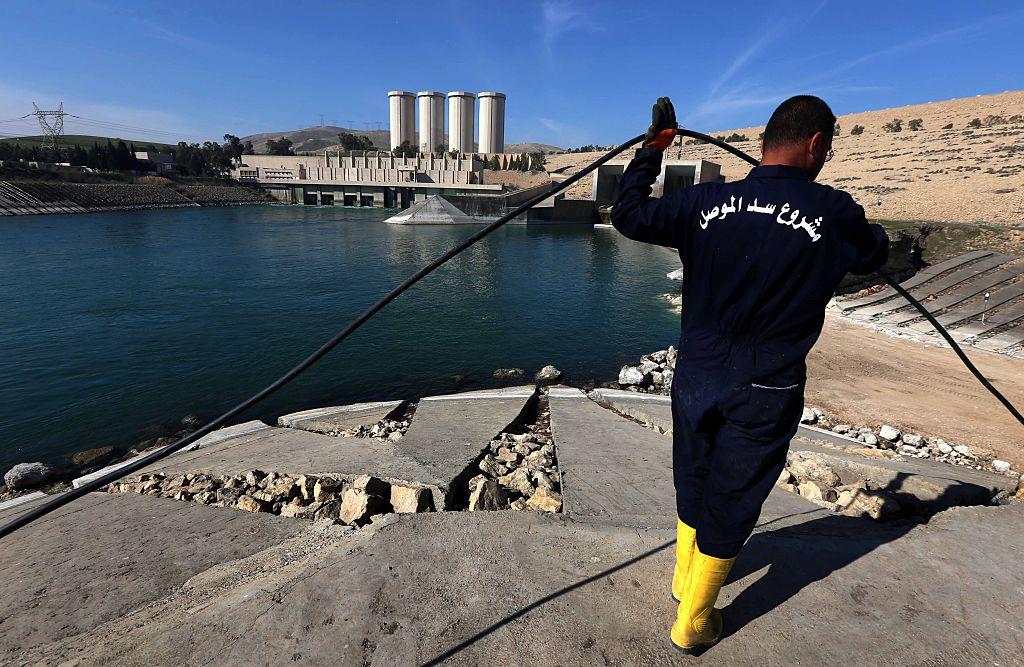Mosul Dam could collapse at any minute 'killing 1.5 million people'
Huge Saddam Hussein-era dam near Isis territory is unstable, experts warn, with even a partial breach capable of causing flooding as far away as Baghdad

Your support helps us to tell the story
From reproductive rights to climate change to Big Tech, The Independent is on the ground when the story is developing. Whether it's investigating the financials of Elon Musk's pro-Trump PAC or producing our latest documentary, 'The A Word', which shines a light on the American women fighting for reproductive rights, we know how important it is to parse out the facts from the messaging.
At such a critical moment in US history, we need reporters on the ground. Your donation allows us to keep sending journalists to speak to both sides of the story.
The Independent is trusted by Americans across the entire political spectrum. And unlike many other quality news outlets, we choose not to lock Americans out of our reporting and analysis with paywalls. We believe quality journalism should be available to everyone, paid for by those who can afford it.
Your support makes all the difference.Engineers and other experts have warned that the collapse of an eight mile (13 kilometre) long dam on the Tigris River in northern Iraq is just a “matter of time”, triggering an environmental disaster which could leave 1.5 million people dead and millions more as far away as Baghdad without food or electricity.
The Mosul Dam, 40 miles (60 kilometres) away from the Isis-controlled city of the same name, holds 11.1 billion cubic metres of water, and has been plagued by problems since its construction in the 1980s thanks to the fact it was built on soluble ground.
It has required constant maintenance to fill the cavities that form underneath the concrete to stop it collapsing ever since.
A 2006 US Army Corps engineering report found the “Mosul Dam is the most dangerous dam in the world” - but the situation has become more precarious since Isis took control of the area in 2014, including, briefly, the dam itself. Many of the 1,500 workers stationed there fled, and the extremists damaged much of their equipment.
“It is just a matter of time. It will be worse than throwing a nuclear bomb on Iraq,” Professor Nadhir al-Ansari of the Environmental Engineering Department at Lulea University in Sweden, who inspected the initial construction, told Al-Jazeera.
A 2015 study from the European Commission's Science Centre found that even a partial breach of 26 per cent would unleash a flood of catastrophic proportions.
A wave of water up to 100 feet (30 metres) high would engulf Mosul in two hours, taking with it people, unexploded bombs, buildings and cars, as well as toxic substances from oil refineries and human waste.
The surrounding flood plains are already home to more than one million people living in tents after being displaced by fighting who would struggle to find protection from the water.
Within four days, both the EU and US experts predict, a wave between six - 36 feet (two - eight metres) high would reach Baghdad, 250 miles (400 kilometres) away.
The UN predicted last year that in any flooding scenario, up to four million people will be left homeless, and aid will take up to two weeks to reach those in need if airports, electricity grids and roads are knocked out. Iraq’s oil refineries and up to two thirds of its wheat fields would also be affected.
New £234 million ($300 million) World Bank funded repairs are being carried out by an Italian engineering company, but the fragile security situation in the area is making completion of the work difficult.
Kurdish and Italian soldiers remain on constant guard for extremist attacks. In October, an Isis convoy armed with explosives tried to approach the dam but were killed by Kurdish missiles before they reached it.
A better and more permanent solution would be to build a second dam - but the political and military instability and lack of funds mean this option is highly unlikely.
Iraqi officials have tried to downplay scientists’ and the international community's fears of an imminent disaster, but Professor Ansari remains sceptical the problem will be solved in time.
“I am convinced the dam could fail tomorrow,” he said.
Join our commenting forum
Join thought-provoking conversations, follow other Independent readers and see their replies
Comments